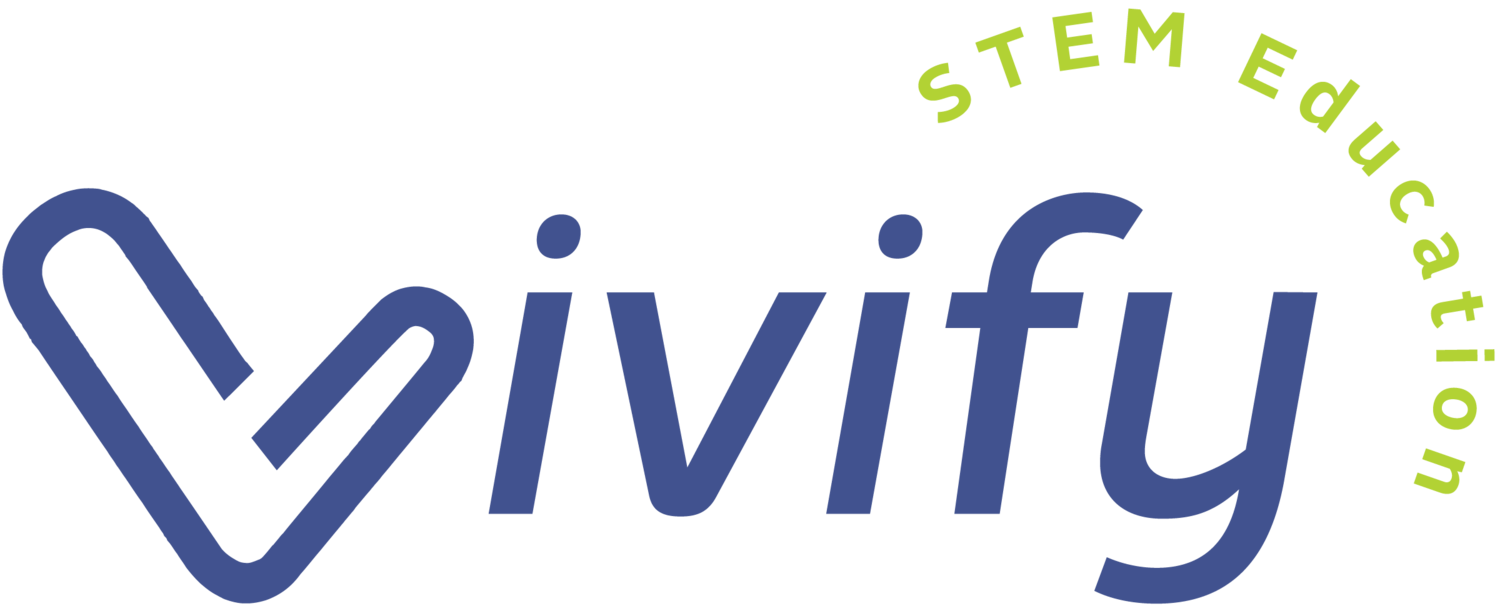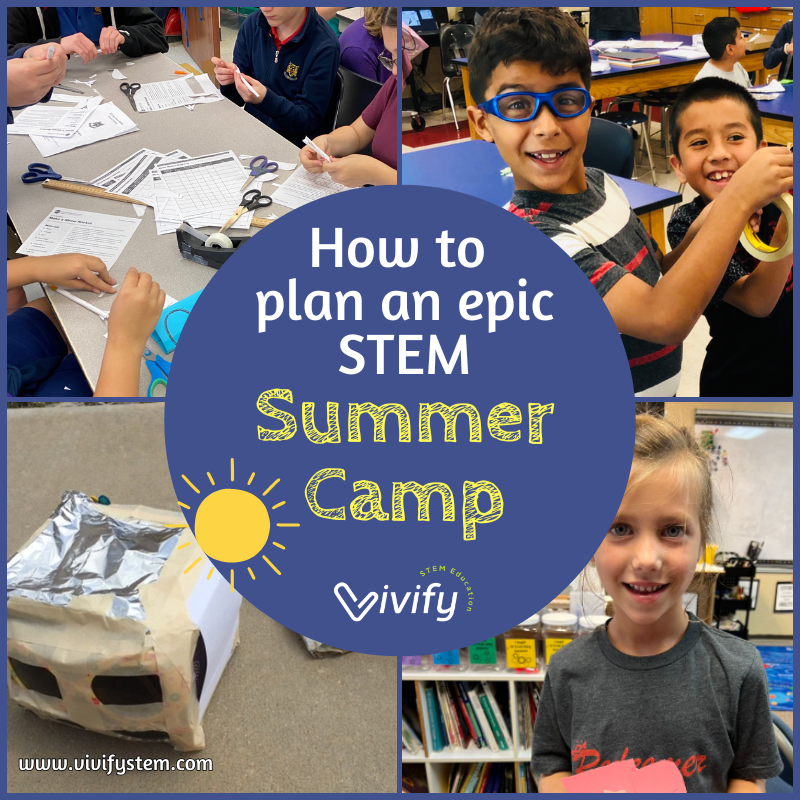How to Plan an Epic Summer STEM Camp (Even If You're New to STEM)
Post by Dr. Natasha Wilkerson
April 4, 2025
Summer is a time for adventure, exploration…and building Mars rovers out of toothbrushes! STEM camps are one of my favorite ways to bring hands-on learning to life. Whether you’re a classroom teacher looking to keep the learning going over summer break or you’ve been asked to run a STEM summer camp and don’t know where to start, this post is for you.
In this post, we’ll walk you through why STEM is perfect for the summer, how to plan a summer STEM camp, tips for STEM beginners, and how to use Launchpad, our ready-to-go curriculum designed for elementary students. Let’s get started!
Why Host a Summer STEM Camp?
Hosting a STEM camp is a great way to extend learning beyond the school year through hands-on exploration that sparks curiosity and builds foundational thinking skills. From building zip lines for injured astronauts to launching rockets for Mars, students forget they are learning. That’s the magic of STEM done right. STEM summer camps help students:
Explore careers they’ve never considered (meet a material scientist!).
Practice teamwork, critical thinking, and creativity.
Ignite curiosity and grow confidence in STEM subjects.
We’ve seen some amazing STEM camps in libraries, community centers, school gyms, and even homeschool co-ops. All you need is space and some simple supplies!
New to STEM?
Here is my advice for a new STEM camp leader:
Keep it simple. Each session doesn’t need to be packed with multiple lessons. One great challenge, like building a Mars lander or launching a straw rocket, is more than enough for a session. Between brainstorming, designing, building, testing, and re-testing, students will stay fully engaged for a long period of time. They will probably be begging you for more time to test that rocket! No need for long lectures. Let the focus be on the main activity.
Embrace the chaos. Summer is the perfect time for kids to get hands-on with building and creating, which naturally comes with a bit of mess. Have a simple system ready for clean-up and organization, but don’t expect a quiet, orderly classroom. Once students dive into building and testing, the energy will pick up. You’ll hear lots of talking, excitement, and maybe even a few shouts of frustration or celebration. STEM challenges spark big emotions because they require teamwork, creativity, and problem-solving. This is the magic of STEM in action. Enjoy it!
Let students lead. You don’t have to have all the answers. In fact, the best moments happen when students explore, make mistakes, and come up with creative solutions on their own. Your role is to support and guide, not take over. Be there to encourage, ask questions, and cheer them on.
Ask guiding questions. While it can be tempting to step in and fix a project that’s not working, don’t do it! Pause and ask a question to help students think through the problem. Ask questions that connect to the big ideas and help them persevere through the design challenge.
Why do you think this isn’t working?
What could you change to make it better?
What other materials could you try?
How might the science we discussed earlier help here?
Planning Tips for a STEM Summer Camp
Before you jump into activities, take a step back and look at the big picture. A little planning goes a long way to set your camp up for success. Here’s what to decide first.
Age Range
Start by defining the age group for your camp. STEM activities can be adapted for all ages, but knowing your audience helps you select the right challenges and level of guidance. Here are some tips:
Younger elementary students benefit from lots of hands-on exploration with simple materials. Focus on building, testing, and playing, with less emphasis on technical vocabulary. Activities should be shorter.
Upper elementary students are ready for more complex builds and deeper conversations about STEM concepts. You can introduce problem-solving steps and encourage more independent thinking while still keeping the activities fun and approachable.
Middle school students enjoy more open-ended challenges and thrive when given opportunities to work more independently. Allow them to take charge of the design process, make decisions about materials, and document their work. You can increase the level of difficulty by adding constraints like time limits or limited supplies. Ramp up real-world career connections.
Topic or Theme
Summer camps are famous for their fun themes, and STEM camps are no exception. A great theme brings your camp to life, turning it into an immersive experience that keeps kids excited from day one to the final celebration. Themes give you the chance to create an engaging storyline that ties activities together, opportunities to decorate your camp space, and maybe throw in a fun-themed dress-up day! Here are some fun STEM themes:
Inventor’s Workshop
Extreme Weather Engineers
Eco-Engineers
STEM Olympics
Spy STEM
Energy Explorers
Maker Mania
Lights, Camera, & STEM
Of course, we always recommend a space theme! Check out our Launchpad Mission to Moon or Mission to Mars for a ready-to-go STEM camp!
A Few More Details
Duration: How long will your camp run? Some camps work well as one—or two-week programs, while others spread activities out over a few months with weekly sessions. Think about your goals and what fits your schedule and space.
Location: Pick a space that gives students room to move and build. Classrooms, libraries, cafeterias, or even outdoor spaces all work well. Just make sure you have enough room for hands-on activities and safe testing zones for projects like rockets or zip lines.
Supplies: Look at what you already have on hand and what you might need to gather. Many STEM challenges use everyday items like tape, paper cups, string, and craft sticks. If you have access to computers or tablets, you can add research or video elements, but most activities work just fine without them.
How to Structure Your STEM Session
Our STEM challenges usually last about 60 to 90 minutes and follow a simple structure:
Start with an Oath. We start the session with a simple oath to remind students of behavior expectations. See the example below from our Launchpad curriculum.
Engage with a story. Our narrator in Launchpad is Astronaut Alex, and this character introduces each mission on the student handouts and teacher slides. I love having students take turns reading the mission brief. The lesson also has a quick warm-up like “What would you take on a trip to the Moon?”
“Thanks to this resource, I was able to plan out an awesome summer camp for my students in a matter of hours rather than days.”
Connect to a STEM Career. In this first mission, we introduced the career of “astronaut.” NASA has a ton of great videos. We also introduced a “STEM Word of the Day” that was a central theme for the challenge. The first mission focused on teamwork.
Design Challenge: Provide materials, introduce criteria and constraints, and then let students brainstorm and create a design solution. Provide guidance for testing, evaluation, and re-design. Here are the activities in our Launchpad Mission to Moon:
Meet the Crew: Team Challenges
Astronaut Training: Moon Trivia Game + Astronaut Boot Engineering Challenge
Get to Moon: Straw Rockets Engineering Challenge
Welcome Tower: Tower Engineering Challenge
Build a Base: UV Science Experiment + Shelter Engineering Challenge
Stay Alive: Grow a Real Plant Device Engineering Challenge
Collect Samples: Grabber Engineering Challenge
Build Rover: Conductivity Science Experiment + Bristlebot Engineering Challenge
Entertainment on Moon: Roller Coaster Engineering Challenge
Mission Success: Coke Mentos Geyser + Atomic Slime
“I used this with a group of 5th and 6th graders during summer school. These lessons were a fun and engaging way for them to learn and work on problem-solving skills. I would highly recommend it”
Launchpad: Ready to Go Summer Camp!
If the idea of planning daily activities, gathering supplies, and figuring out how to “teach engineering” sounds intimidating, we’ve been there.
That’s exactly why we created Launchpad.
Launchpad is a 10-mission curriculum that transforms your group of students into a team of astronauts on a journey to the Moon or Mars. Each mission includes:
A video message from “Astronaut Alex” to introduce the day
Hands-on engineering challenges (like building a Mars lander or a rover)
STEM career connections (hello, mechanical engineer!)
Printable student mission sheets and step-by-step teacher guides
Supply list
Save time and start planning for the summer!







